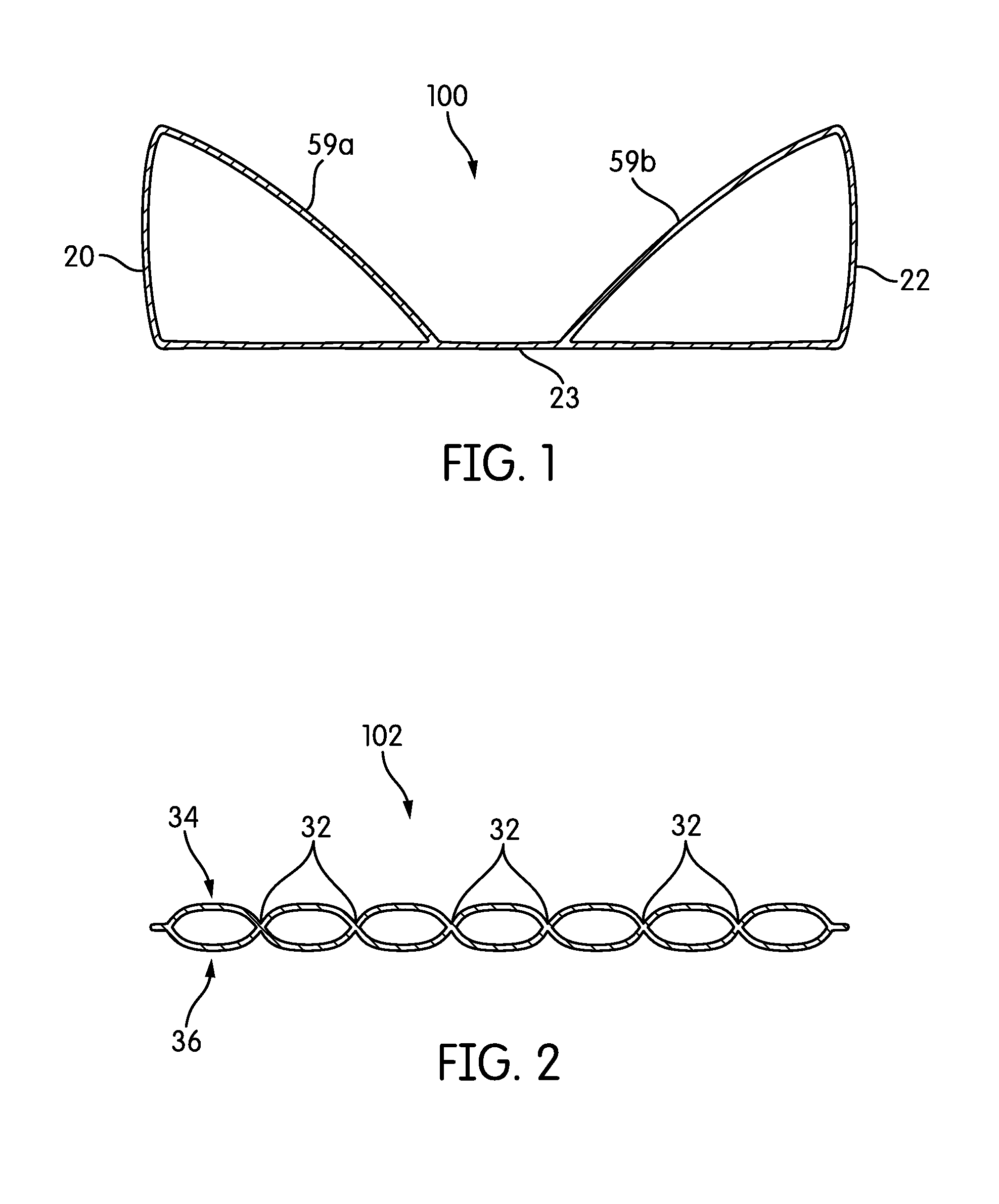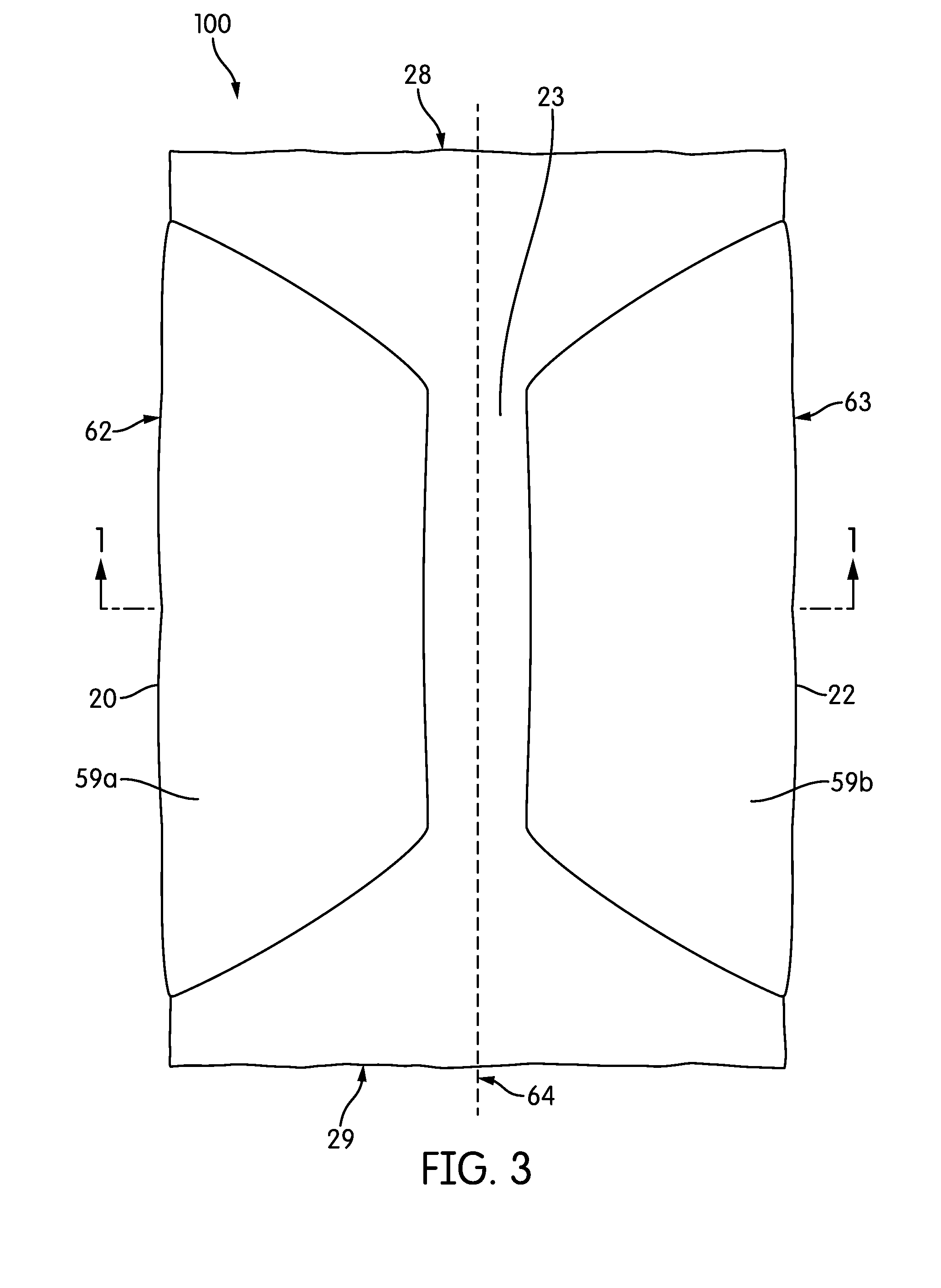Patient turning and positioning system device
a positioning system and patient technology, applied in the field of patient turning and positioning system devices, can solve the problems of repetitive or sustained deceleration of fetal heart rate, decreased blood flow, and blood pressure drop of patients, so as to facilitate patient turning and repositioning, reduce entanglement, and facilitate laundering and repair
- Summary
- Abstract
- Description
- Claims
- Application Information
AI Technical Summary
Benefits of technology
Problems solved by technology
Method used
Image
Examples
Embodiment Construction
(1) Detailed Description of the Turning Device
[0047]This invention provides for a device (“turning device”) and method to maintain a patient (108) in a lateral position, to turn a patient (108) and to shift a patient (108). The invention comprises a turning pad (100), an inflatable positioning pad (102), air-supply hoses (104), and an air-supply system (106).
[0048]The turning pad (100) comprises a left inflatable chamber (20), a right inflatable chamber (22), and a base pad (23). The left inflatable chamber (20) and the right inflatable chamber (22), when inflated, form a volume that has at least one surface that supports patients lying on their side (“support surface”). Utilizing an inflatable chamber with a slanted surface as the support surface is preferable as it allows for positioning a patient (108) over the slanted surface of the volume, allowing a patient (108) to lie on her side with comfort. Examples of volumes that have such slanted surfaces include wedges and trapezoidal...
PUM
 Login to View More
Login to View More Abstract
Description
Claims
Application Information
 Login to View More
Login to View More - R&D
- Intellectual Property
- Life Sciences
- Materials
- Tech Scout
- Unparalleled Data Quality
- Higher Quality Content
- 60% Fewer Hallucinations
Browse by: Latest US Patents, China's latest patents, Technical Efficacy Thesaurus, Application Domain, Technology Topic, Popular Technical Reports.
© 2025 PatSnap. All rights reserved.Legal|Privacy policy|Modern Slavery Act Transparency Statement|Sitemap|About US| Contact US: help@patsnap.com



